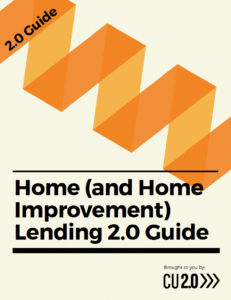The Apple Card is going to change things.
With its large market appeal and history of developing user-friendly tech, the Apple Card is set to disrupt offerings from traditional card issuers. Credit unions especially may worry about losing market share. And they should worry—if they’re unwilling to learn from Apple.
Overall, not everything that changes will be good, and not everything will be bad. I actually expect the Apple Card to benefit both consumers and financial institutions in the long run.
Nevertheless, I’m not sold on the card itself. Here are my series of hot takes.
Apple Needs a Win
Not the hottest take out there, but it sets the scene. Apple’s primary form of revenue for the last several years has been their iPhone. Unfortunately for Apple, iPhone sales are plummeting.
One noticeable trend that consumers have noticed recently is that Apple’s products are getting more expensive. They already were expensive:
- Android phones were cheaper than iPhones
- Similarly-specced PCs were far cheaper than Macs
- Early mp3 players were basically pennies on the dollar compared to iPods
What Apple managed to do in each case though? That’s the real selling point. Their products were relatively free from defects. They were fast. They were intuitive. They had a killer aesthetic. They had vision.
Apple found a way of making what people wanted, and they found a way of making it convenient and trendy for everyday consumers.
The iPhone came out in 2007. The iPad came out in 2010.
Tell me about a genre-defining product they’ve released since then.
Apple’s sales started going south as the rest of the world caught up. As a result, they’ve been increasing their product prices for years. Although the first iPhones were considered expensive at around $500, their current flagship has more than doubled that sticker price. In an attempt to turn things around, they started Apple pay, hoping to get a piece of the transaction pie. It didn’t catch on the way they’d hoped.
Now, Apple is doubling down on payments. This time, they worked with what the market was ready for and could support.
But we have to acknowledge the elephant in the room here: Apple isn’t releasing a card because they can do it better than the competition—they’re releasing one because they need to increase revenue while sales are slowing. That brings with it some good, some bad, and some ugly.
The Good
Some of the things that the Apple Card offers are objectively good. In fact, they’re so good that I think they could—and should—influence the way that all issuers handle their cards.
This is where Apple shows that it still has some tricks up its sleeve.
1. Privacy
The Apple Card has no numbers printed on it. It has the same authentication protocols as their software and devices. Consequently, they significantly limit the opportunity for petty fraud. There’s just no low-hanging fruit for thieves.
I wouldn’t be surprised if more card issuers implemented similar strategies going forward. And they should. Less fraud would benefit consumers, merchants, and financial institutions alike.
2. Integrated Application
I love that Apple Pay supports the Apple Card. Some of the integrated functions are great too. It’s a glimpse of the old Apple, thinking like a fintech.
Many of the functions are designed around consumer convenience and transparency. With the Apple Card, you can:
- Follow your transaction history in both time and location
- Understand interest charges and develop better payment strategies
- Receive cash back rewards instantly and without complication
Nobody likes jumping through hoops to solve problems. The Apple Card does away with the hoops altogether.
3. Style
The card looks good. Most card issuers haven’t used titanium. My guess is that they don’t because titanium is very lightweight and flexible, and most metal cards seek to be heavy and imposing. Still, I think Apple’s look is sharp, and it gives many card users what they want: something that looks and feels like it has authority.
4. No Fees
I hesitate to put this in the “good” category. The Apple Card may not charge fees, but it has a very aggressive interest rate for a no-fee card. They also make up for their lack of fees by raising their interest rates after missed payments.
Still, despite some minor technicalities and chicanery, I think Apple may be onto something. If you want broad market adoption, cutting out nickel-and-dime fees is a great way to pull people in and make them feel better about your product. Plus, it may help with brand loyalty—people won’t resent mounting fees that overshadow their rewards.
The Bad
Not everything Apple does is great. These are some of the card features—or marketing features—about which I’m not particularly impressed.
1. The Numbers
Here are some of the numbers for the Apple Card:
- 1% cash back on most purchases
- 2% cash back when using Apple Pay
- 3% cash back on direct purchases from Apple
There’s no reason to mince words: most cash back cards feature a better rewards structure. For a cash back card, 1% is unimpressive at best. And, as many card reviewers have noted, other cards can get you a better cash back deal on Apple products than Apple’s own card can.
The other numbers are the interest rates. Their APRs range from 13–24%. That’s only slightly lower than most entry-level premium cards.
Apple is charging nearly the same rates for far fewer rewards.
2. Reliance on Apple Pay
Stop trying to make “fetch” happen. It’s not going to happen.
Same with “Apple Pay.” Apple Pay does not have broad market adoption. Many major retailers still don’t have chip readers on their cards. Although automatically adding the card to Apple Pay may help with the underwhelming consumer adoption of Apple Pay, I’m not sure it’ll be enough.
Limiting decent reward rates and structures on an arguably-failed payment platform is not going to make people appreciate or adopt the payment platform. However, it will frustrate consumers who want 2% cash back but can’t get it because nobody accepts Apple Pay.
3. Online Retailers
Maybe this is part of the Apple Pay issue, but not every card-not-present transaction can be solved with Apple Pay. I’m sure there’s an obvious solution that Apple hasn’t released in its promotional materials, but what happens when you need to enter your card number and your CVV?
The Ugly
Here’s what I think is particularly alarming about the Apple Card. These two issues alone are enough to keep me from using it. I’m saying this as someone who switched to an iPhone before grad school and has never looked back:
1. The Whole Ecosystem Is Only Surface-Level Convenient
Yes, it’s great that the Apple Card and Apple Pay support better consumer behavior. I appreciate that they value privacy and security (really). I like that they’ve put effort into establishing one central payment ecosystem.
I hate that it’s Apple-specific. If you don’t use an iPhone, you can’t benefit from any of it.
Apple is making a long-term play to make people rely on its card. Not because it’s the best, but because it’s so deeply integrated into their banking practices.
Part of me cynically believes that Apple’s “no fees” boast is a ruse. With new iPhones costing over a grand, and with the average life of an iPhone sitting at about 3 years, it seems almost like Apple’s saying, “we don’t need to worry about fees, because once you use this card, you’re basically stuck buying our phones forever.”
That would certainly address their lackluster iPhone sales issue, too.
2. “A Credit Card Created by Apple, Not a Bank”
Weaknesses are not strengths. Remember when AirBorne came out and it touted on its label, “created by a school teacher”? Well, it’s a slick marketing move—by celebrating the creator’s lack of credentials, it preempts many criticisms that would have later come out of the woodwork. When Apple boasts that their card was created by Apple, not a bank, they’re trying to play off their inexperience as a strength.
That’s not to say that financial institutions have created all the best payment technology out there. They haven’t. Still, it’s worth noting that Apple may have some growing pains with their card due to their lack of experience.
Here’s the other thing:
The card is issued by Goldman Sachs. Subprime mortgage crisis aside, let’s just look at Goldman Sachs’ experience with issuing cards: zero.
It’s a case of the blind leading the blind.
Call them hiccups, call them bumps in the road, call them and speak to a beleaguered customer service rep—even though Apple is good about not rushing products to market, don’t be surprised if there are some things to iron out after release.
The Takeaway
There are a lot of Apple fans in the world. Apple built a strong following, and their base has high customer loyalty. For many, and especially for stalwart Apple adherents, the Apple Card won’t just feature in their wallets—they’ll be right at the top.
However, the card’s perks are middling. The aesthetic is nice, but it doesn’t have the same “wow” factor as most premium cards.
So, what does this mean for the credit union and financial industry? Only time will tell. But I do expect a few broader influences for cards from all issuers:
- Increased emphasis on security
- Transparent payment options and history
- Associated apps or functions that allow consumers to understand and take control of their finances
- Real-time rewards
Aside from that, I don’t see anything particularly groundbreaking about the Apple Card. However, it will be disruptive. Apple has a loyal base, and many will be happy to use a fancy titanium card with an app over a superior card from a credit union or a bank.
While I don’t expect the Apple Card to effectively take control of the payment market, I do expect some of their features to gain broader market adoption. I also expect that unless Apple rethinks their approach, the veneer of convenience will quickly slip away, allowing better cards to move back to the top of consumers’ wallets.
Unlike the technologies that some fintechs are working with, the Apple Card isn’t revolutionary. It’s a middling rewards card backed by Goldman Sachs and running on Mastercard rails.
The best bet for credit unions and banks is to consider adding similar privacy features and app support. From there, their superior experience and products should keep them comfortable.
Read more from the CU 2.0 Blog:
The Easy Way to Speed Up Your Credit Union Audits by 25%
CU-2’s Top Online Banking Providers of 2019 (Part 1)



